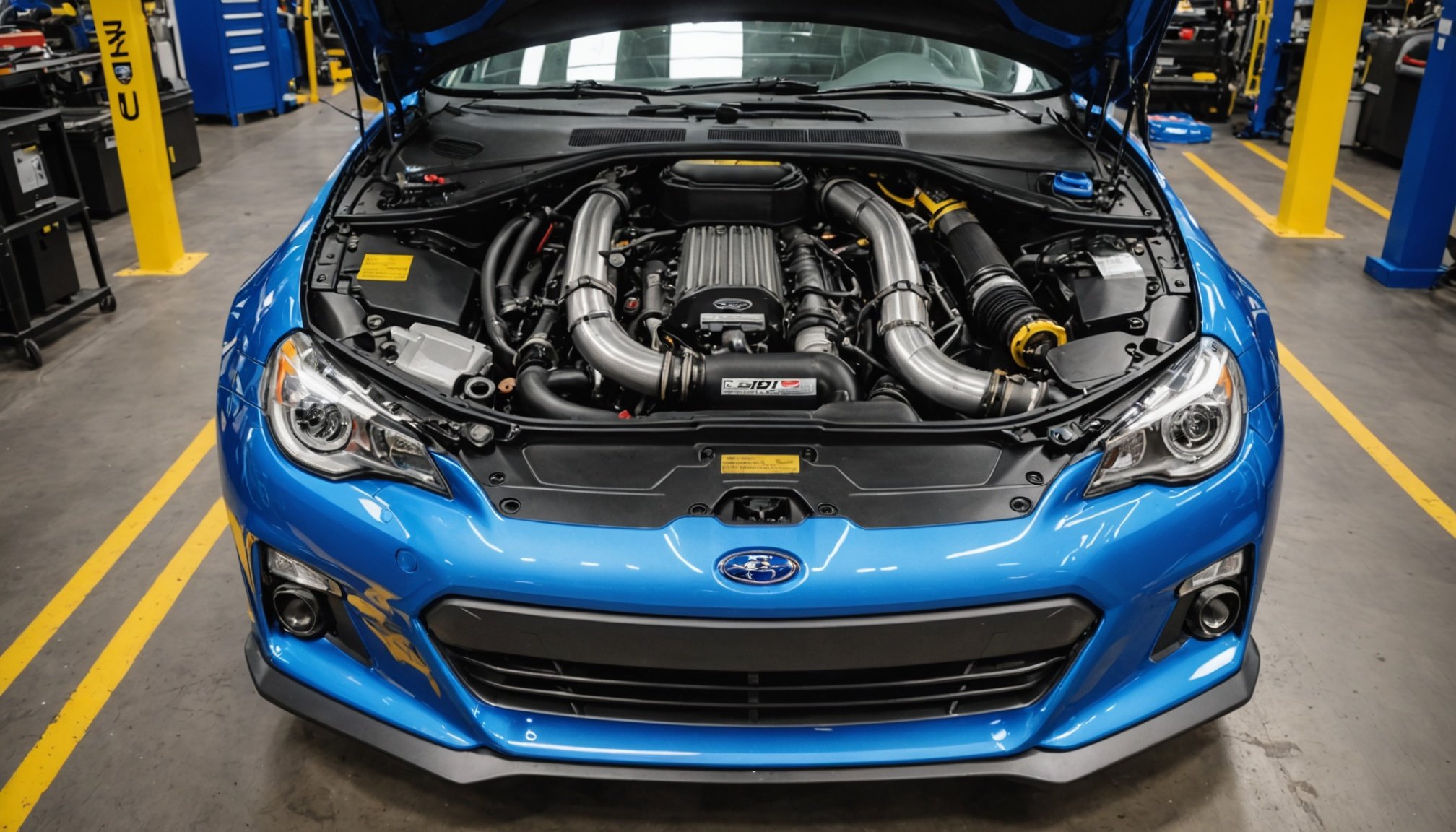Understanding Strut Tower Braces
A strut tower brace is a performance part designed to improve a vehicle’s chassis rigidity. By connecting the tops of the strut towers in a car, this brace helps to distribute forces more evenly across the chassis during cornering. This increased rigidity results in a more responsive and connected driving experience, an appealing benefit for enthusiasts seeking performance upgrades.
Purpose and Benefits
The primary function of a strut tower brace is to reduce chassis flex. This is particularly beneficial in high-performance scenarios, where reducing such flex can significantly enhance handling precision. Performance upgrades like these are crucial for maintaining stability during high-speed maneuvers, as they provide more predictive handling and feedback.
In the same genre : Unlock Peak Fuel Efficiency for Your Toyota Highlander: Find the Ideal Tire Pressure Today!
When compared to other suspension components, such as sway bars or coilovers, a strut tower brace offers a unique advantage. While sway bars may reduce body roll and coilovers adjust ride height and stiffness, a strut tower brace complements these by improving the overall structural coherence of the vehicle.
Choosing the right suspension components depends largely on one’s driving style. However, introducing a strut tower brace is often considered one of the cost-effective performance upgrades due to its balance of affordability and impact on driving dynamics. For those considering enhancements, it’s a compelling option that contributes to a holistic improvement in vehicle performance.
Have you seen this : Unleash the benefits of switching to organic brake pads for your volvo v60: a smart upgrade for everyday performance
Impact on Handling and Stability
Enhancing a vehicle’s chassis rigidity can significantly improve both handling and vehicle stability, especially in performance cars like the Subaru BRZ. With the integration of a strut tower brace, drivers can experience increased precision when maneuvering through sharp turns or under high-speed cornering. This performance enhancement is primarily due to reduced chassis flex, which translates into better handling improvements.
Chassis rigidity directly influences how a car reacts to steering inputs, tire grip, and road irregularities. A stiffer frame achieved by using a strut tower brace offers more reliable and predictable responses, encouraging drivers to make confident, assertive moves on the road. This upgrade also contributes to higher traction retention, essential for maintaining vehicle stability during dynamic driving situations.
For Subaru BRZ enthusiasts, these benefits transform the driving experience, making rapid adjustments and maintaining a stable ride easier. Real-world driving experiences often reveal noticeable changes in responsiveness and control post-installation. Furthermore, feedback from users highlights how a minimal installation financially compares to larger modifications but noticeably enhances performance. This makes it a valued addition for those looking to balance cost with tangible handling improvements.
Benefits for Subaru BRZ Owners
Subaru BRZ owners often seek ways to boost vehicle handling and enhance performance. Installing a strut tower brace directly benefits this particular model by increasing chassis rigidity. This upgrade, tailored for Subaru BRZ, provides more precise steering and enhanced stability during aggressive driving maneuvers.
Vehicle handling is notably improved with the incorporation of a strut tower brace. Owners often report a more connected feel between the road and the vehicle, with performance feedback indicating better turn-in response and reduced understeer. Testimonials from enthusiasts highlight how this installation transforms the driving experience, making the Subaru BRZ feel more agile and responsive.
Long-term, the addition of a strut tower brace doesn’t just heighten the thrill of driving but also contributes to maintaining vehicle integrity. Over time, reducing chassis flex can minimise wear on other suspension components, prolonging their lifespan and improving durability.
Many Subaru BRZ drivers emphasize the cost-effectiveness of strut tower braces, considering them a worthwhile investment with significant impact on enhanced performance. This feedback reflects the importance of choosing performance upgrades that align with driving goals, ensuring a satisfying, long-lasting enhancement to the vehicle’s capabilities.
Installation Guide for Strut Tower Braces
For car enthusiasts wanting to enhance their vehicle’s performance through DIY projects, installing a strut tower brace is a satisfying endeavor. This guide sheds light on how to properly integrate this performance part into your vehicle.
Tools and Equipment Required
To embark on the installation, gather these essential tools:
- Socket wrench set
- Torque wrench
- Jack and jack stands
- Screwdrivers
Proper preparation ensures a smooth experience and prevents potential setbacks.
Step-by-Step Installation Process
-
Preparation: Park your vehicle on a flat surface and turn off the engine. Place the jack stands under the vehicle for safety.
-
Access the Strut Towers: Open the hood and locate the strut towers. Clean the area to ensure a secure fit for the new brace.
-
Remove Existing Nuts: Use the socket wrench to carefully detach the nuts atop the strut towers.
-
Position the Brace: Align the strut tower brace over the towers, ensuring symmetrical placement.
-
Secure the Brace: Affix the provided new nuts, tightening them with the socket wrench. Follow up with a torque wrench for accurate tightening to the manufacturer’s specifications.
Common Mistakes to Avoid
While installing, ensure you:
- Do not overtighten nuts, risking damage.
- Maintain equal pressure on both sides for balance.
- Verify all connections for durability to maximize performance upgrades benefits.
Comparisons with Other Performance Upgrades
When considering performance upgrades for a vehicle, a strut tower brace is often compared with other suspension mods like sway bars and coilovers. Each offers distinctive advantages, significantly affecting handling and ride quality.
A strut tower brace primarily enhances chassis rigidity by linking the front strut towers, thus reducing flex. This improvement leads to more precise steering and a cohesive driving experience without drastically altering the ride’s comfort. In contrast, sway bars focus on minimizing body roll during corners, which can be pivotal for track use but may compromise ride comfort in daily driving.
Coilovers provide customisation by allowing adjustments in ride height and stiffness. While effective for achieving specific handling characteristics and aesthetics, coilovers require precise tuning and can be costlier than a strut tower brace.
In terms of cost-benefit and ease of installation, a strut tower brace is favoured for those seeking enhanced performance without the complexity or expense of other mods. Drivers aiming for sharper handling without a significant expense or modification to the vehicle’s balance might find a strut tower brace to be the most practical choice, particularly for vehicles like the Subaru BRZ. This option suits varied driving styles due to its straightforward functionality.








